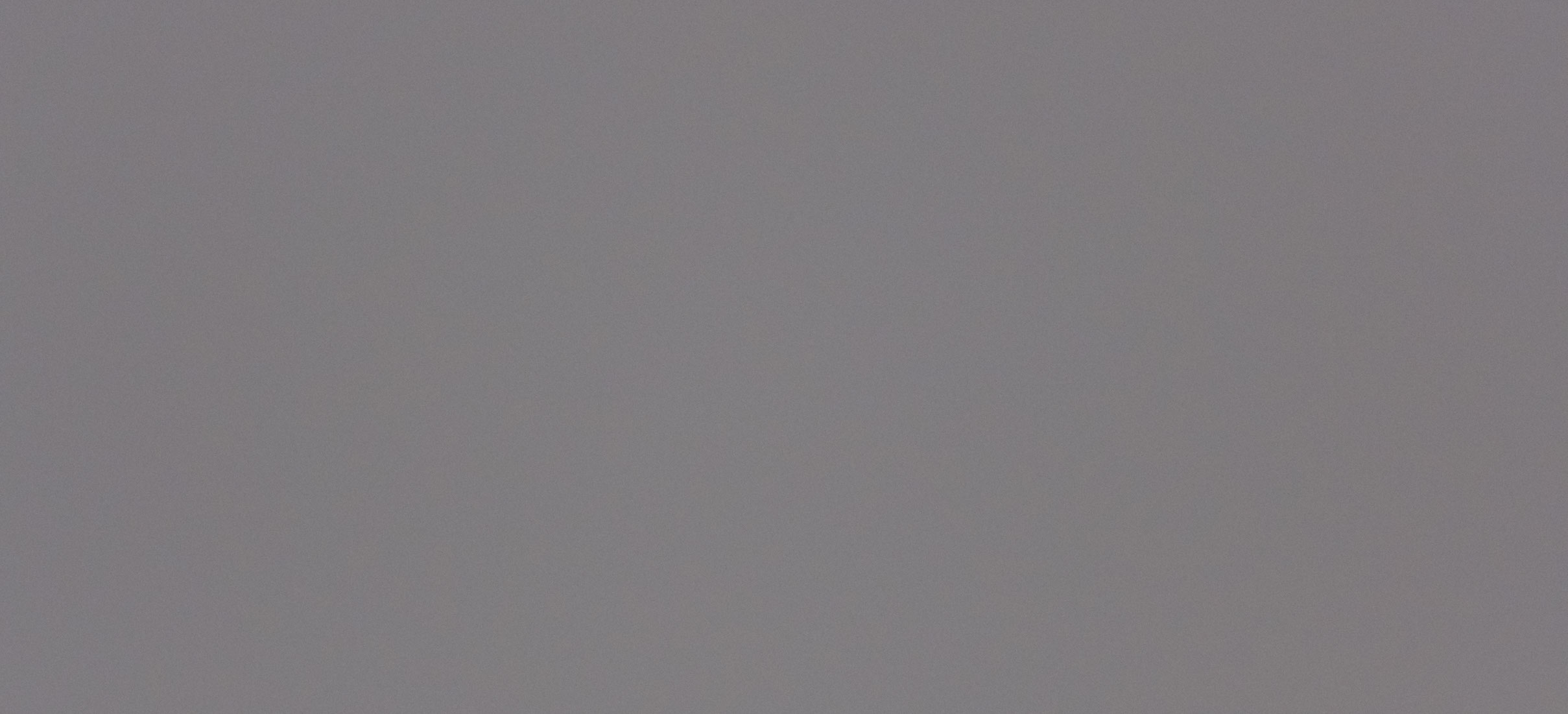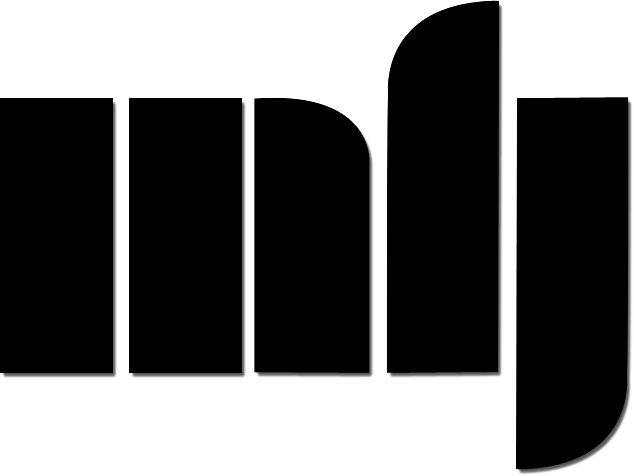Process and Material plinths: Margaret Honda’s films

Coming to filmmaking from a background in the arts, primarily sculpture, but also photography and installation, Margaret Honda is led by process and materials. Her films like Spectrum Reverse Spectrum and Equinox are realized within the commercial Hollywood setting on 70mm, not a staple format for experimental filmmakers. Yet the films are the furthest from what one comes to expect from Hollywood filmmaking. The conceptually rigorous process-based films bring into focus an aspect of industrial filmmaking practice that is rarely known, if at all– the use of timing tapes in print generation. Realizing the productive potential of these tapes and working closely with technicians in the industrial setting, these cameraless and frameless films, printed without a film negative, enunciate a way of dealing with pure color. In her 35mm film Color Correction, the title referring back to the process of its making, we are able to conceive of a film that is sensitive to its emulsion and underscores an idea of a standard with respect to color in the film industry, achieved through careful calibration of light valve intensities. Her 16mm film Wildflowers, unburdened from its representational duties, the stock having simply expired, is an imageless film that salvages its indexical potential through the use of a voice.
Honda refers to her filmmaking practice as collaborative, the result of a symbiotic relationship between her ideas and the specific competences of film lab technicians. Her approach to film is marked by a curiosity towards the medium, not merely accepting but questioning the functions of various processes and material habits in the industry. Honda’s films might evince a proximity to avant-garde discourses from the 1960s, in particular, Minimalism and Conceptual art, and there is no denying certain shared ethos, but they are also distanced from the brash heroism of the period and its festish for pioneerism. Her filmmaking comes from a much more humble place and resists the art-world’s less-than-ideal solutions to exhibiting moving image work of this kind. They orient us towards key questions facing photochemical film today, in spheres of production and distribution.
This conversation in A Coruña, Spain, followed a focus on Margaret Honda’s films at the 15th edition of the (S8) Mostra de Cinema Periférico, 2024.
Spectrum Reverse Spectrum (2014)
Arindam Sen: One fascinating aspect of the film is how it plays into the representational vs material, and by proxy, the industrial vs avant-garde conundrum so central to experimental film discourse. The film is not a representational film, but made in 70mm format which is favored by the industry to achieve the domination of the representational over the material, counter to smaller gauges like 8 or 16mm. In fact, as far as I understand, film grain, or scratches accumulated over consecutive projections that make the material manifest, is not desirable.
Margaret Honda: The grain is inherent so that’s never been an issue. I would prefer that scratches not be there. But I’m probably approaching materiality in a slightly different way than what you might be suggesting.
When I made the film, I wasn’t actually thinking in terms of the specific discourse you’re talking about. I was simply thinking about how I can work with the material, what makes sense for me. That’s also how I approach my work in sculpture. I knew I wasn’t going to use a camera. I had to work with a lab and one of only two labs that could print 70mm at the time was FotoKem, which is not far from where I live. Interestingly, the lab viewed this project as highly experimental because they had to devote time and resources to a project that didn’t start with a negative. As I was working on the film, I was reminded by the lab how experimental the whole process was! So even though I was in an industrial setting, in fact THE industrial setting, I never felt like I was playing off of that.
I certainly recognize that the existence of the film itself brings up these questions, because of where and how it was made. In my own practice, whether it’s with film or with anything else, I tend not to think in terms of image and narrative. I wasn’t thinking specifically about not having imagery. I felt that the spectrum itself was kind of an image, it’s a sort of found image. And people have talked to me about the film being a documentary of its making, of what happened as it went through the printer.
It wasn’t part of my thinking, but maybe the film problematizes this question of industrial versus avant-garde and opens-up different pathways that this contestation closed off. It’s neither on one side nor the other and refuses to be pinned down, which is fine with me because I am not taking a stance with the work. I have nothing against industrial filmmaking, in fact I rely on that system for my work and the people at the lab have been extremely helpful and tolerant of me. I don’t see them as an enemy and I also don’t see what historically has been referred to as avant-garde filmmaking as an enemy either. I feel like I am coming from a different moment that maybe is slightly beyond that discussion because I didn’t start making films until 2013. I came to it from an art context and experimental film history is something that I have been learning as I go along. I wasn’t in reaction to anything I was simply working with these materials and processes.

AS: It is definitely beguiling, as you said, looking at the film from FotoKem’s side, it is experimental, and on the other hand the film is made with the means that is slightly alien to the experimental film ecosystem, so depending on where one looks at it from, the film always seems on the other side.
The one thing that struck me while watching Spectrum yesterday, and this perhaps in a way relates to Paul Sharits’ work though his films are very different, is what one might call optical interia, the perception in the now being determined by what preceded it. So yes, we are looking at the same color in the spectrum twice due to its palindromic form, but how we perceive it is altered.
MH: I didn’t anticipate that would happen because I wasn’t trying to make a film about color and optical effects. When I began working on the film, I thought I was just going to do the spectrum but that worked out to be about 1200 ft. and one roll of 70mm print stock is 2500 ft, so I decided to do the spectrum in reverse, as well, which produced a palindrome. And to keep the palindromic form, I decided to use properly oriented head leaders at both ends. It wasn’t until I saw the print that I became aware of the optical effects. The film was produced to exact exposure values, and the first and last halves are of equal color values. Despite this precision, your vision can be affected by the intensity and duration of the colors and the movement between darker and brighter passages. Under the best possible conditions, it’s like wall-to-wall color and the effects are even greater in a situation like that. Between the first and second half, the perceived changes in the same colors can be very noticeable. Ideally, there is an even field of color, from edge to edge, top to bottom and unfortunately because of the silvered screen here, you had a hot spot and darkened edges in yesterday’s projection, so you didn’t get the fullest effect of the film. The film could operate as a kind of mirror for the viewer and not for me, which is what I wanted. I didn’t want the film to be about me or my vision of things. I really wanted it to be something for the audience, for people to focus on their own physical responses.
The idea of the perception of the now being determined by what preceded it also comes up in Color Correction, though in a different way. In that film, I find that I’m trying to remember if I’ve seen a particular color before or if it’s totally new, or else I’m trying to remember what I just saw because I don’t know when the cuts are going to happen and they sort of take you by surprise.

AS: One thing that is of consequence in Spectrum is the notion of a readymade– a way of de-authoring the work by limiting compositional choices. The duration of the film is determined by a roll of 70mm print stock. FotoKem is one of two places where you could have made the film. But there is always a dialectic at play between choices and constraints. For example, what options did you have apart from Kodak 2383? Did you make a choice about the printer (low or high speed)?
MH: It was as if there were three found objects: the print stock, the spectrum, and the printer. I didn’t have an option on the print stock. I don’t know historically how many other 70mm print stocks would have been available, 30-40 years ago, but 2383 is the one that’s available now.
Same goes for the printer. There are two in the lab and they both have the same capabilities. And the visible spectrum is an inalterable physical fact. That is what I had to work with and I wanted to see what could come out of those limitations.
AS: Is there a reason why you chose to transition across the color spectrum so smoothly?
MH: What guided me was just looking at printed images of the visible spectrum which are without abrupt transitions. The amount of space devoted to each color in the film replicates the amount of space it occupies in the spectrum itself, accounting for the color space of the print stock. I always imagined it being just this very glacial movement through the spectrum and that turned out to be a difficult thing to achieve because the light valves on the printer are temperamental. You can’t open or close them too quickly, so there was a lot of work that had to be done to make sure that the machines would operate the way we needed them to. That’s where Vince Roth at FotoKem came in. He was the only person who knew how to do all that and, luckily for me, he was very interested in figuring things out because that’s also his area of expertise.
AS: Did he have to make certain choices during the making of the film? Something that was not given, to get back to the question of the readymade versus choices of composition.
MH: There may have been a couple of moments where we had to give up some density in order to achieve a smoother transition. Also, we had to make a second pass through the printer for the blacks, just to get them to be more dense. The other thing that happened is that in 2015, Kodak changed the recipe for the 2383 emulsion. I needed to make a print in 2016 and we essentially had to remake the film because the new emulsion was not responding to the instructions for the old emulsion. For films with images, it wasn’t a problem but because my film was dealing with pure color points, so it was obvious where the new emulsion was failing. So even though there was a readymade roll of print stock, it now had a different emulsion and we had to adjust the transitions to address the sensitivities of that emulsion.
AS: I didn’t know you had to remake the film! That is fascinating to hear because within the everlasting debate around medium specificity, what actually constitutes the film medium has been a matter of contestation. To my knowledge, no film as yet can lay claim to being emulsion-specific, or in the least, emulsion-sensitive.
MH: Colors would just drop off into black, they wouldn’t transition to the next color. The greens especially were really bad. It was a huge problem and Vince was the one person who was able to solve it. The print that we saw yesterday—and the print that you saw at KW Berlin was actually the same print—is different from the prints that were made in 2013 -2014. It’s still the same film, it’s just there are slight differences in some of the transitions because of the emulsion. One way of talking about this particular film is that we are looking at what the emulsion can do. What was possible with the old emulsion is one thing and what’s possible with this emulsion is another. And if it changes again, it will be something else. In a way that’s what we are really looking at. I used to think that projectors would be the main problem in terms of the viewing life of these films, but it’s really the emulsion because that changes everything. For Color Correction, which I began working on in 2014, I was advised to look for timing tapes from no earlier than 2000 so that they would be from the same era as the then-current print stock.

AS: The compendium film to Spectrum, Equinox, which we didn’t see here but I saw at the Berlinale a few years back: could you talk about the constants and variables between the two?
MH: Equinox, like Spectrum, is also a film printed on color stock, because there is no black and white 70mm print stock. The red, blue, and green light valves on the printer open and close on a fifty-point system, so zero light points is fully closed and fifty light points is fully open. What I was trying to do was make half of the film move between zero and twenty-five light points and the other half move between twenty-five and fifty. It starts out in black, goes through middle gray, all the way to white, and then back to middle gray and then black. That presented a whole different set of problems because we were dealing not only with the amount of light but also with the amount of each color since I wanted everything to be as neutral as possible. Adjusting the valves so that things didn’t get too blue or yellow required more tests than when we were working out the transitions in Spectrum. Getting a good white on color print stock is extremely difficult. Getting a good print also depended on the chemistry in the processor that day. The projection also has an effect on how neutral the print looks. It wasn’t possible to just transfer what we did with Spectrum to Equinox. There were some similarities in how Vince approached both projects but the two were considerably different in terms of the technical concerns.
AS: Do you perceive other projects after Spectrum and Equinox using timing tapes and the 70mm format?
MH: I haven’t thought of other 70mm films yet. Part of it is because Vince has retired, and he was a true collaborator. Neither of those films would have happened without him and I know that now I might be quite limited in these really extreme experiments utilizing large format. The short answer is no, I don’t at the moment have any other plans but it doesn’t mean I won’t in the future. I have a lot of 9.5mm cartridges that I have been looking at and thinking about.

Color Correction (2015)
AS: Film color, both at the level of printing and projection, is a subtractive phenomenon of light, any image on a screen is a subtraction from a rectangle of white light as Hollis Frampton had said. Color Correction is also a subtractive film in an additional sense since it is an articulation of a gap derived from some consideration of a standard with respect to color. The action in the film is proportional to the extent of performed correction, where the deviation from the standard was more, isn’t it?
MH: You’re suggesting that Color Correction is subtractive on two levels: what appears on screen—which is already a subtraction taking place in the projector—is also proof of another subtraction that takes place in the printing process. Would that be correct?
AS: Yes, precisely. We have a concrete sense of what a film negative is, a generated print is, and, though perhaps less known, one can look up what timing tapes are, so the film is an articulation of something intangible between all this, the gap between the negative and the print.
MH: Yes. This film is totally material and totally abstract. I mean abstract in that you have to think about what it is, not abstract because it is non-representational. You’re not meant to see color corrections because their job is to be invisible, whether as a form of erasure or enhancement to the existing color in the negative. They’re actions that control the light valves in the printing process. This film makes them material. Most timing tapes for Hollywood films probably wouldn’t be that extreme because the director of photography would know what they are doing. Timing tapes with an extreme color palette might imply that the negative was problematic, for any number of reasons, or else that it was desirable for the film to be more chromatic. When I got the timing tapes for Color Correction, I was willing to accept whatever they produced so I didn’t know if my film would be wildly colorful or more subdued.
AS: Color correction is also interesting in another particular way. Most of the “film as film” arguments hinge on making the physical film explicit– with scratches, grain etc. But what that does is limit the notion of what the medium of film is, which also comprises a projectionist or a cone of light for example, and in the case of Hollywood film production, timing tapes. On these lines, would you like to say something about your consideration of the medium of film? I don’t think anybody has considered timing tapes as the film medium yet or has made work that emphasizes its existence.

MH: I guess in terms of film medium, I am relying on material and processes to guide me. It’s more of a collaborative working process, it’s not as if I want something external to the materials themselves and make decisions only based on that. This goes back to the idea of not thinking in terms of images or narratives. It’s like, here are some materials, what can be done with them, what can anybody do with these that doesn’t require a kind of insistence on personal presence? For me, this question is a political one, what it means to work in this system, because I am working with a lot of different people and relying on their knowledge, and they are relying on me to come to them with ideas to guide them in terms of production. We could call it film as an object or a material, but it’s really the whole process that is important to me and that I would describe as the “film medium.” It’s looking at the entire system as far as it reaches right now and working with that. For me all of it is really about this larger ecosystem that makes things possible because you don’t work in a vacuum.
AS: Can you detail what particularly struck you about the tapes when you came to know of them?
MH: I got to know about timing tapes, these computer-generated ribbons producing instructions for the printer’s light valves, when I was working on Spectrum.
Once I understood that a timing tape was the “original element” for Spectrum, I realized I could use any timing tape as the basis for a film. It was this little piece of paper and all that it implied somehow was very generative for me. I wasn’t looking at it coming from a filmmaking background, and hence I wasn’t limited to thinking about it in terms of correcting color for a film and then forgetting about it. It’s a tool and I was interested in the different ways it can be used. I didn’t know how you’re meant to think about these things. I studied material culture, so I am interested in figuring out what you’re supposed to do with a tool or a material. But I gravitate towards figuring out what you can do with it other than its intended purpose.
AS: The two times that I have seen the film including yesterday, what inevitably happens is the speculation about the film that we don’t see, to which the timing tapes originally belong. This reminded me of Louise Lawler’s film-performance A Movie Will Be Shown Without the Picture (1979), where we are confronted with the sound of a movie without its title and the images, and different movies are performed in different screening iterations, inviting similar speculation on the part of the audience.
MH: This is a slight aside, and then I will get back to the question. I had wanted to make Color Correction as an edition because it didn’t matter which set of timing tapes were used, so I was trying to get additional sets of timing tapes and the person I was able to get them from was no longer working in the industry and I got busy with other things, so I didn’t do that. I liked the idea of there being an edition, which you normally think of as identical things, but in this case each film print would look different but in fact would be the same thing. It’s something I have done with other print and sculpture editions.
I do not know what film these timing tapes are attached to. More to the point, I don’t need to know because what’s important to me is making visible their existence, not referencing their source. In terms of speculation, it’s inevitable that people will try to figure out the source and a few people have told me that they are going to look for every film made between 2000 and 2013 that was 101 minutes long. Because Color Correction provides a kind of recitation of narrative film syntax, inevitably your mind will also be exploring some other film, or else an idea of a film, while you’re watching it. Certainly, with Louise Lawler’s work you’re listening to dialogue and trying to place the images that go with it and in my film, you don’t have access to the dialogue but you’re just trying to figure out certain types of action. Successive changes in color maybe have the rhythm of a shot-countershot or a car chase or I don’t know what. In both cases you’re sort of getting a simultaneous double bill, but I am giving you a little bit less than what Louise Lawler is.
AS: In a way you’re giving more in terms of what people can speculate.
MH: Yes.

Wildflowers (2015)
AS: Wildflowers I suspect has a certain biographical aspect to it. How long have you lived in Southern California?
MH: I grew up in Southern California and there have been a few periods when I was away at school and so forth, but for most of my life I have been there.
AS: And wildflowers in Southern California is something you noticed along the way?
MH: When I was very young, I had really bad allergies. And my doctor told my parents to take me out to the desert. So something that I do remember from my childhood is driving out to the desert and looking at this massive array of wildflowers. I can’t remember if it made things better. It probably made things worse. There has been a terrible drought in California for quite some time and when I made the film it was in the middle of a very bad drought period. That’s why I thought of actually filming wildflowers because I had assumed that I would just get black and white negative with these wildflowers which are supposed to be spectacularly colorful. But instead I got nothing which was even better.
AS: It is also a film about film’s obsolescence.
MH: I was actually thinking about extinction. I was thinking about something that was disappearing which was California wildflowers and something that had already disappeared which was Kodachrome. It’s not at all meant to be sentimental, this is just the way it is. I didn’t know how much longer I would be able to film wildflowers or get Kodachrome. So I was looking at the options with things that are disappearing.
AS: What were your plans if you had received the footage with the flowers in all their pronounced glory?
MH: I originally thought that would be the film. It would just be the black and white print.
AS: What about duration? And other compositional considerations?
MH: It was two 50 ft. 16mm magazines, so the total is like 3 minutes. And I just assumed that that would be the length of the film because those were the only two cartridges I had. And the fact that it came back without anything on it gave me a better film, I think. It really highlighted what I had been thinking about when I started making the film, in a way that I couldn’t have predicted.
AS: But you were ready to make a so-called representational film?
MH: I was! I haven’t really thought a whole lot about that and what that means for me. If anything, that would have been a film specifically about color, unlike Spectrum, as well as being representational.
AS: But without editing?
MH: No, there would have been just negative cutting to put it together. But there wouldn’t have been any editing. Each roll consists of eight ten-second shots of individual flowers and I used everything.
AS: And the voice, you decided to have it from the beginning or was it after you saw what came back from the lab?
MH: I actually came to that decision after I saw the footage. I had assumed it would be silent and maybe there would have been titles or something. I don’t know, I didn’t get that far in my thinking about it, because I never saw anything with images. Once I saw that there were no images, I knew I needed to do a voice-over that would correspond with what would have been each of the sixteen shots.
On exhibiting the films
AS: Can you say something about the exhibition of your films? Hollywood style theatrical distribution is obviously ruled out, but by sometimes making films on 70mm, experimental film ecology– underground venues and microcinemas –are also excluded. The format and insistence on theatrical projection of the film takes out most of the galleries and museums. What you are left with is very limited.
MH: I was thinking about that when I made Spectrum and Equinox, just because 70mm in general is very hard to screen, and harder to screen properly. I am really only interested in showing these works in theaters, that’s part of what they are. It requires a commitment from programmers and venues that is an extension of the film’s own commitment to its extreme material form. The 35mm print of Color Correction is also very difficult to screen. What that leaves me with primarily are film festivals and some museums that still have the equipment. Cinema Project in Portland, Oregon wants to screen both of my 70mm films. There are various theaters that they work with. That is a possibility, if there is a smaller film society that doesn’t have a set home but works with theaters in a community. The format and projection requirements definitely limit things but I focus on the fact that there are still programmers who are trying to find venues for the work.
AS: You wouldn’t consider looping a film like Spectrum or Equinox for a museum setting?
MH: No. Equinox and Spectrum are palindromes, which are a forward and backward thing, not a loop. I show the head leaders at both ends and I’ve always thought of them as linear objects, as 2500-foot lengths of material that have to be threaded up each and every time they are projected. And in terms of experiencing any perceptual effects relative to the precise exposure and color values in both halves of the prints, it makes the most sense to see them from the beginning rather than coming in at a random moment.
I adhere to the protocols of conventional theatrical presentation where the audience is seated in a theater, between the projection booth and the screen, and the projection takes place at a fixed time. This provides the context for considering what these films are in relation to the industrial apparatus that produced them. This setting also carries with it a greater possibility of giving you back your body. Looping the films in a museum setting cuts a lot of corners, why not just do it properly? I am sort of adamant about that.
Conversation by Arindam Sen
Disclaimer: This page is for your personal use only. It is not to be duplicated, shared, published or republished in whole or in part, in any manner or form, without the explicit permission of the publisher, author, and copyright holder(s) of the images.
